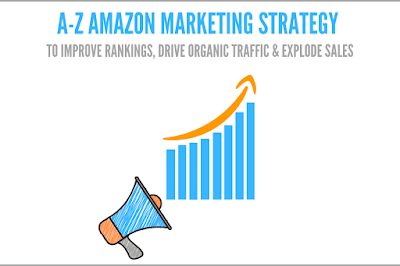The right Amazon strategy is critical to
scaling your Business on the world’s fastest growing e-commerce channel where
millions of active shoppers search and browse products. While it has become
more competitive, there is more opportunity than ever to grow your business on
Amazon. Here’s a look at Amazon strategy that accounts for the essential
factors to drive your business growth on the Marketplace.
Amazon Operations – You can spend all the time
and resources on your product listings, content and advertising – and still
fall short if your operations aren’t in order. Your approach to operations will
differ if you are a first-party vendor that sells products wholesale to Amazon,
a third-party seller using Fulfillment by Amazon (FBA), or a third-party seller
using an alternative fulfillment service. Regardless of your model, the
objective remains the same: identify and minimize operational gaps that slow
performance and cost money.
This becomes more important when you consider
that all operational factors impact one another. Your inventory and order
fulfillment impact your in-stock rate, which influences control of the Buy Box,
which impacts your Sponsored Products Advertising, which in turn affects sales
and your organic product rankings.
Amazon Creative Content – You can drive all the
traffic in the world to your listings but if your creative content is lacking
or not congruent with the rest of the brand’s assets across the web, you will
lose out on visibility and sales. Amazon is making a concentrated effort to
empower brands with the creative tools and features they need to establish
their brand equity and promote shopper loyalty. Amazon currently offers a
multitude of branding features including Amazon Stores, A+ Content, Premium A+
content and Enhanced Brand content.
Not only do these creative features help to
improve the aesthetics of brands on the Marketplace but they also provide new
opportunities to drive traffic to a brand’s entire catalog and increase detail
page conversion rates. Building out your product pages and storefront can
contribute to a seamless customer experience that resonates with shoppers
across your website, social channels, and Amazon.
Amazon Advertising – Your operations are dialed
in, your product pages and stores feature visually compelling creative, now
it’s time to power up the advertising machine to get more eyeballs on your
product listings and store pages.
The failure to leverage a comprehensive
advertising strategy on Amazon significantly limits the ability of brands to
reach customers. Because over 70% of Amazon shoppers do not click past the
first page results. That means if your products aren’t displaying on page one,
you have little chance of shoppers landing on your page. Even brands that have
a strong organic ranking need a paid media strategy because, without it, they
will fall behind in traffic, sales velocity and ranking. When it comes to
generating paid traffic that powers your Amazon flywheel you have several options:
Amazon Sponsored Product Ads, Sponsored Brands, and Amazon DSP.
Amazon Sponsored Products – These are
pay-per-click ads based on keywords that drive traffic to a desired product
detail page within the Amazon platform. SP is particularly important because you
can create auto campaigns for keyword harvesting and manual campaigns for more
granular targeting. These ads are great for driving traffic and showing up for
important keywords that you otherwise wouldn’t display for on the first page
organically.
Amazon Sponsored Brands – These are keyword-driven ads that can appear across the top of the SERP. In 2018, Amazon opened
up Sponsored Brands to 3 new ad placements including the middle of the SERP and
at the very bottom of the SERP. Sponsored Brands are great for driving
awareness or branding around a particular keyword.
Amazon DSP – Formerly known as Amazon
Advertising Platform (AAP), the Amazon DSP is Amazon’s display offering that
can be used to target Amazon audiences across webpages and apps that are connected
to Amazon Display network. From home page banner placements to HTML offerings,
Amazon DSP is a premium advertising offer available within Amazon vendor
services.
One of the major perks of DSP advertising is
the ability to leverage Amazon customer data to serve ads to past purchases and
other shoppers likely to purchase your products on Amazon-owned network sites.
Amazon DSP targeting spans the entire marketing funnel: lifestyle segments,
in-market segments and retargeting segments – all based on Amazon’s first party
shopper data.
Amazon is only going to grow more competitive,
which is why it’s important to leverage on Amazon strategy that accounts for
the main factors that drive success on the marketplace. These factors call for
mastering your operational efficiency, creative content to build brand equity
and tell your story, and Amazon advertising to drive visibility and traffic to
your optimized listings.




